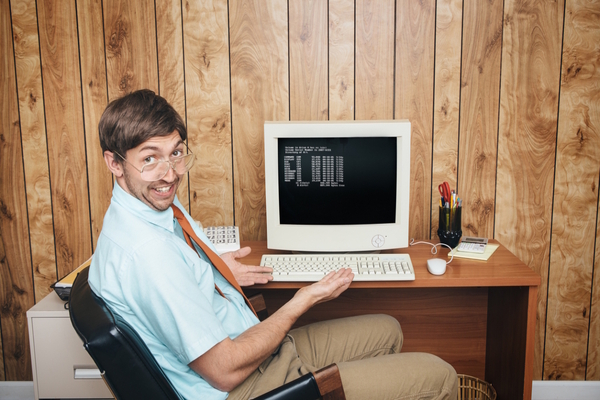Changing the language around the "return" to the office

Cliff Ettridge at The Team explains why language matters when it comes to persuading employees that spending some time in the office is important for themselves as well as for the business
In August, Apple made headlines with the announcement that the tech giant was forcing its employees to “return” to the office. This was swiftly followed by news that many staff were rebelling against the “back-to-office order”.
And why wouldn’t employees balk at being told that they were “returning” or “going back” to the pre-pandemic working environment? Haven’t we learnt anything from repeated lockdowns?
The problem that the framing of it as "returning" to the office, even if it is only mandated for three days a week, as Apple has done. It’s why debates about the future of work have got so heated as businesses begin to look ahead to a (hopefully) lockdown-less future.
This use of language – particularly in the media – has created a sense that people will be forced to “return to” to the pre-pandemic status quo: a strict 9 to 5, long commutes, and a distinct lack of flexibility. Since Covid, social, environmental, and individual contexts have changed. People feel that the flexibility they experienced was a positive liberation for them.
It evokes the “I’m going back to work” feeling after a holiday – of something ending. Instead, businesses should be talking about moving forward: how they are going shape the future and the kind of work environment that will be created.
The phrase “hybrid-working” should not be included in this future. By its very definition, hybrid refers to a mix of two things, in this situation, a home space and an employer-owned or paid space. It’s being used as a battering ram in the fight between anti-home working Alan Sugar and more progressive employers.
Whereas for most knowledge workers, their work takes place in numerous settings: perhaps at home or in the office, but it could take place at a client’s premises, in a library, a coffee shop, or even on a walk. It’s a blend.
Language also matters when it comes to talking about the communal working environment. At The Team, we no longer call it “the office” but instead refer to it as “Team Space”. “Office” is an old-world term. It comes from the Latin term “officium” which means “sense of duty” or service, but we now know our communal working space is about more than the performance of tasks. It’s about exchange of ideas. It’s about conversations. It’s about serendipity.
Now, everyone renaming the office something whacky puts businesses in danger of not being taken seriously, but they can change the attitude towards the purpose of the space. Calling it a hub or the London/Manchester/New York space helps indicate that it’s a tool for employees, rather than somewhere they are forced to be.
For decades employers have viewed the office as a means of control: keep an eye on your workers or they’ll be unruly and get nothing done, but the pandemic has definitively proved that’s not true. You can allow people to work their preferred way and they will still be productive, and at the same time enjoy their home lives and their work lives much more. And it’s so much better for improving diversity.
Businesses do need some structure and boundaries, but liberation within them maximises workers’ potential. At NatWest, they refer to it as “freedom in a framework”. Each type of work has a framework that’s right for the type of work they’re doing, but within that, they have freedom to choose what work’s best for them.
So, what should the “office” of environment of the future look like?
The answer is: I don’t know – but that’s a good thing. Leaders need to first ask the important questions: what do we want this space to be? What do our employees need this place to be? What does it need to be for the business to flourish?
That’s how you will shape the right workspace for your business. Those looking for ready-made solutions or just copying what others have done will fail. Pre-pandemic it was about control, during Covid it was survival mode, but now is a chance to take stock and explore the variety of options.
There might need to be space for teams to explore different ideas together creatively. Or a space that encourages chance encounters or to build relationships and personal connections that you can’t do via Zoom. The technological help is at our fingertips.
There is also nudge tech, which uses technologies, like machine learning, AI and chatbots, to share the best time for catching up with colleagues in person. The metaverse has huge potential to form part of the future blend.
It’s up to leaders to ask questions, to test what works, and to never settle on a concrete solution too early. If they rush to recreate their personal idea of what the future is going to look like, it will be like the cartoons of the 1950s that predicted what the 2000s would look like – pretty but nothing like reality – and it will be a very costly mistake.
Cliff Ettridge is Partner at creative branding and communications agency The Team. Leading their employee experience strand, he designs employer brands, creates internal communication plans and develops campaigns to bring business strategy and messages to life.
Main image courtesy of iStockPhoto.com

Business Reporter Team
Most Viewed
Winston House, 3rd Floor, Units 306-309, 2-4 Dollis Park, London, N3 1HF
23-29 Hendon Lane, London, N3 1RT
020 8349 4363
© 2025, Lyonsdown Limited. Business Reporter® is a registered trademark of Lyonsdown Ltd. VAT registration number: 830519543





